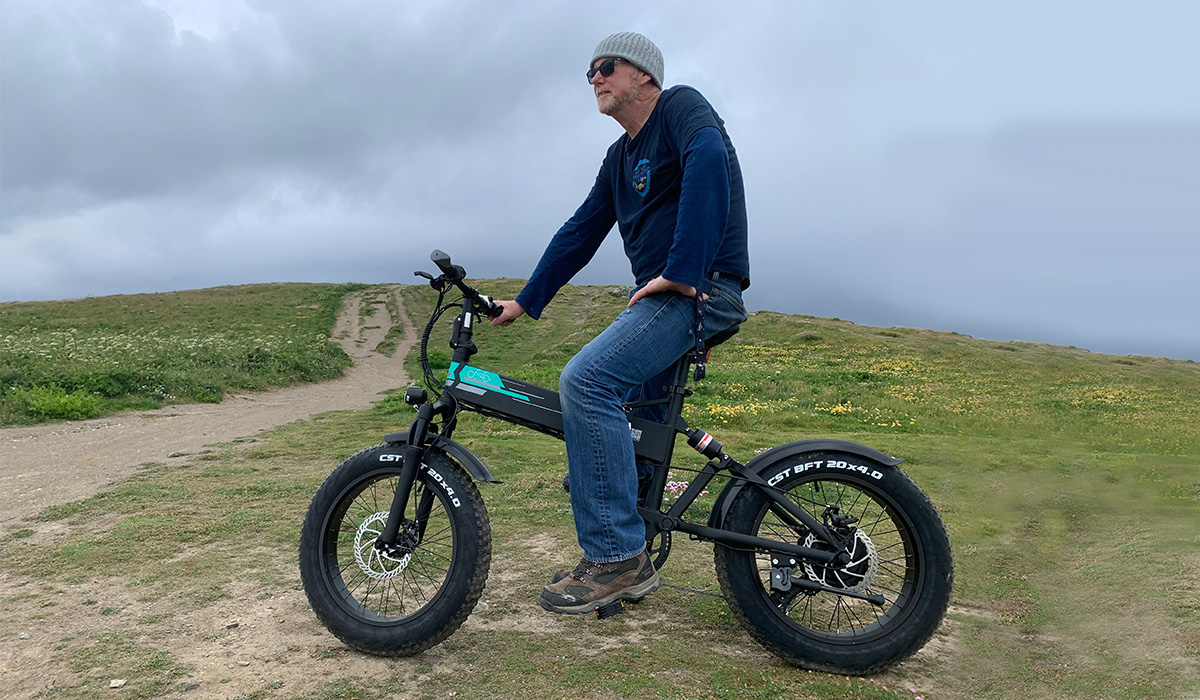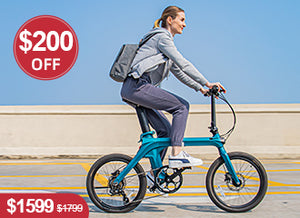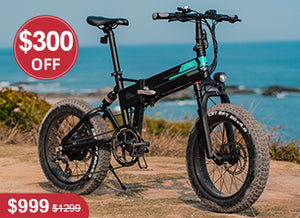
Over the past decade, e-bikes have positively skyrocketed in popularity, becoming the go-to choice for stylish urbanites, sporty outdoors types, and eco-conscious commuters alike.
With their sleek, contemporary designs and now more lightweight frames, e-bikes have evolved into more than just a practical mode of transportation for the more sensible commuter. They have become a bona fide everyday vehicle, sports accessory, and even fashion statement; all rolled into one.
Loved by trendsetters of all ages and backgrounds, these low-maintenance, environmentally friendly vehicles are not only easy on the wallet but also kind to Mother Earth, and, let's face it, whichever side of the eco fence you sit on, we probably need a little more of that, in this day and age.
If you're considering joining in with the fun and hopping on the e-bike bandwagon, you'll find that there's no shortage of options to suit your taste and preferences.
Thankfully, it isn't complicated. In general, there are three main types of e-bikes on the market: the pedal-assist (also known as pedelec) for those who want to break a little sweat, the throttle-based for more effortless cruising, and finally, the hybrid for the best of both worlds. Each type caters to different needs and preferences, so it is worth getting acquainted with their unique offerings.
But let's get down to the real question, specific to one type in particular: What does pedal assist mean, and is it right for you? In this short article, we'll delve into the world of pedal assist, giving you the inside scoop on whether it's the perfect match for your e-bike aspirations.
What Is Pedal Assist?
Pedal assist is a feature found on electric bikes that provides motor assistance while the rider is pedaling. Basically, the electric motor kicks in and offers additional power to help propel the bike forward, making it easier to ride uphill, against the wind, or when carrying heavy loads. This feature was created to complement the rider's pedaling effort rather than replace it entirely.
Pedal assist systems typically use sensors to detect the rider's pedaling speed, force, or both. These sensors send information to the e-bike controller, which in turn determines how much assistance to provide based on the rider's input. Most e-bikes with pedal assist allow the rider to choose between different levels of assistance, ranging from minimal to significant, to suit their individual preferences and riding conditions.
Why Is Pedal Assist Beneficial?
Pedal assist offers numerous benefits to e-bike riders, making their cycling experience more enjoyable, efficient, and accessible. Firstly, pedal assist makes riding easier, particularly when tackling challenging terrain such as steep hills or strong headwinds.
Secondly, pedal assist can extend the range of an e-bike, as the rider's pedaling contributes to the bike's propulsion, meaning less reliance on the battery alone. This can be especially useful for commuting or touring, where longer distances may be covered.
Pedal assist also encourages physical activity, as it still requires the rider to pedal to receive assistance. This makes e-bikes with pedal assist a great option for those looking to stay active or get into shape, as they can gradually reduce the level of assistance as their fitness improves.
Pedal assistance should also make riding more accessible to persons with special needs or even those who are recuperating from accidents. Riders may be able to reap the rewards of riding without pushing themselves to the fullest, thanks to the motor's added power.
Is Pedal Assist Better Than Throttle-Based?
When comparing pedal assist to throttle-based e-bikes, there are several factors to consider, as each system has its own set of advantages and disadvantages.
While some riders may prefer the natural, bike-like feel and additional exercise that pedal assist provides, others may prioritize the direct control and ease of use offered by throttle-based e-bikes. Below, we'll delve deeper into the pros and cons of both pedal assist and throttle-based e-bikes to help you make an informed decision.
Pedal Assist E-Bikes
Pros:
Encourages physical activity: As mentioned earlier, pedal assist systems require the rider to pedal, promoting a more active cycling experience.
Greater range: By combining human power with electric assistance, pedal assist e-bikes can potentially achieve a longer range compared to throttle-based e-bikes, depending on the rider's input.
Legal considerations: In some jurisdictions, pedal assist e-bikes are subject to fewer restrictions than throttle-based e-bikes, making them a more convenient option for some riders.
Cons:
Less control over motor output: Unlike throttle-based e-bikes, which allow the rider to control the motor directly, pedal assist systems rely on sensors to determine the level of assistance, which may not always be as precise or responsive.
Higher complexity: Pedal assist systems generally involve more components, such as sensors and controllers, which can increase the overall complexity and potential maintenance needs of the e-bike.
Throttle-Based E-Bikes
Pros:
Direct control: Throttle-based e-bikes give riders the ability to control the motor output directly, allowing for precise acceleration and speed adjustments.
Ease of use: Throttle-based e-bikes can be ridden without pedaling, providing a more effortless riding experience that may be preferred by some riders, particularly in stop-and-go traffic or on short trips.
Simplicity: Throttle-based systems are generally less complex than pedal assist systems, as they do not require additional sensors and controllers, which can make them easier to maintain.
Cons:
Reduced physical activity: Since throttle-based e-bikes do not require pedaling for motor assistance, they may not encourage physical activity as much as pedal assist e-bikes.
Shorter range: Relying solely on the motor for propulsion can result in a shorter range compared to pedal assist e-bikes, as the battery drains more quickly.
Legal restrictions: Throttle-based e-bikes may face more stringent regulations in some jurisdictions.
Bottom Line
Ultimately, the decision between pedal assist and throttle-based e-bikes will come down to your own unique preferences, riding style, and possibly even local regulations. Both systems offer pros and cons, so it is worthwhile considering your specific needs when choosing an e-bike.
Interested in exploring other aspects of owning an e-bike? Check out our further articles, blog posts, and review guides, for further reading.











